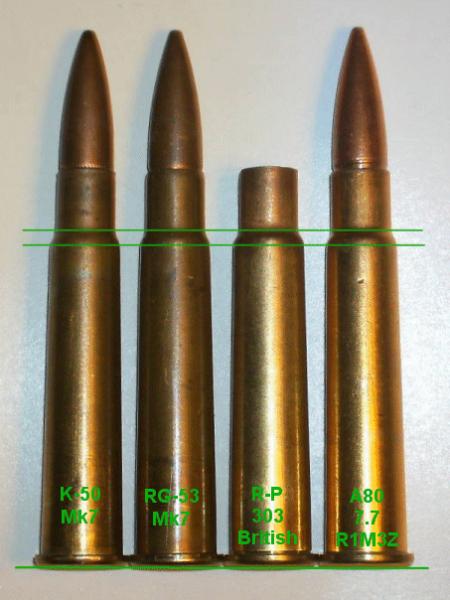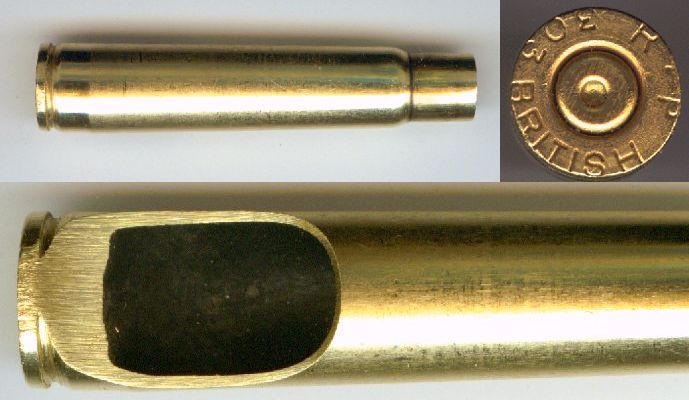Seems to me there's no significant difference in the shoulder location of unfired .303 cases or loaded ammo in my little stash - regardless of national origin
Anyway, it hardly makes much difference since the chambers are designed with plenty of clearance at the shoulder, and the intent is for the cartridge to stop on the rim long before the shoulder touches (mud, not reloading, being the original plan).
Near as I can figure, the purpose of the shoulder in the Wilson gauge is to alert the user when the head-shoulder dimension is too long - which would leave the cartridge base protruding above the back end of the gauge. That could be a useful bit of information to help reject cases that need some F.L. sizing to fit in a (mythical?) "standard" chamber.
Mr. Horton is confused about my case stretching tests. The one I reloaded "19 times without any case stretching." didn't involve any spacers (neoprene, nylon, or otherwise). It was an R-P commercial case from which I removed the rim to demonstrate that the skinny .303 shoulder was entirely adequate for rimless-style headspace control in a neck-size-only operation. As can be seen in the image below, there ain't no place to put a spacer on this one!
I suspect Ed was the unlucky purchaser of a bad batch of Winchester cases - which may have been "outsourced" (Can you say "S&B"?) instead of made in USA- and he's made some questionable generalizations about American brass quality on the basis of this experience. As long as some of us keep reminding the audience that "it ain't necessarily so", there's plenty of room for lively discussion. (Sometimes he's even been known to admit someone else might be right.
)
- Knowledge Library

- MKL Entry of the Month
- Australia
- Austro-Hungarian Empire
- Canada
- Czechoslovakia
- Denmark
- Finland
- France/Belgium
- Germany
- Italy
- Japan
- Norway
- Russia
- South America
- Sweden
- Switzerland
- Turkey
- United Kingdom
- United States
- Yugoslavia
- Is my rifle authentic or a fake?
- Jay Currah's Lee Enfield Web Site
- On-line Service Records (Canada)
- Technical Articles/Research
- Forum
- Classifieds

- What's New?
-
Photo Gallery

- Photo Gallery Options
- Photo Gallery Home
- Search Photo Gallery List
-
Photo Gallery Search
- Video Club

- iTrader













 PM
PM
